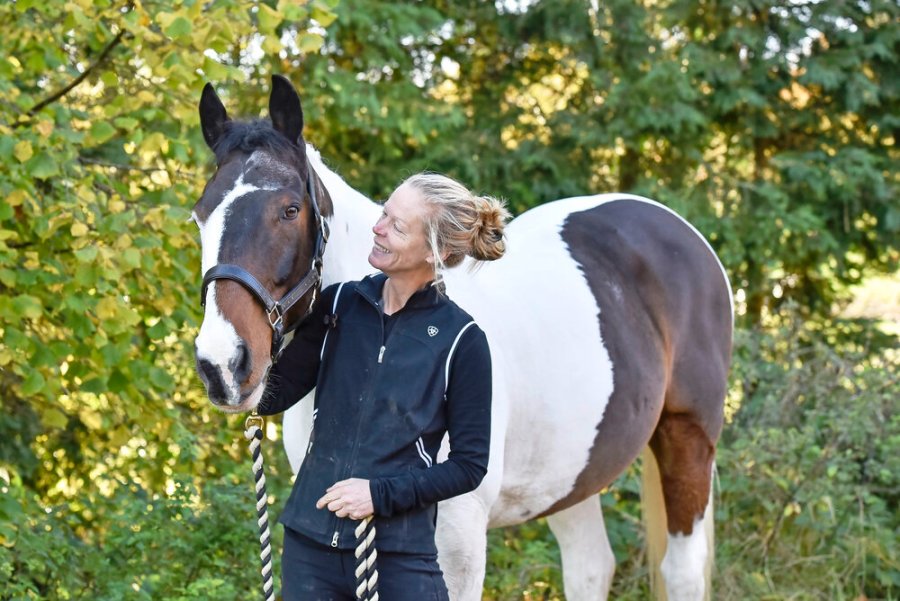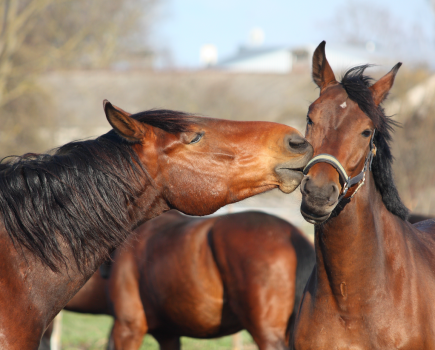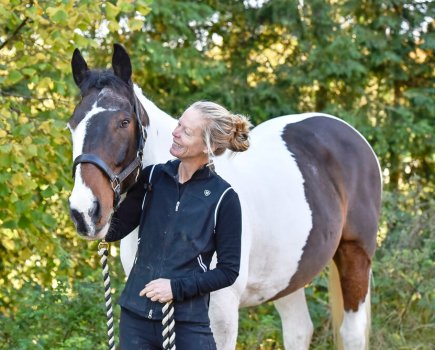Even when not riding, it doesn’t mean that we can’t spend time developing a bond with our horse. Behaviourist Justine Harrison explains how to go about it.
1- Hang out together
Being stabled for long hours means that your horse will likely be very bored, so take the opportunity to spend some quiet time with him and get to know him better. Catch up on your chores – sort out your grooming kit, clean your tack and so on – outside his stable so that he isn’t alone. You could even read a book or study with him. He will really appreciate the company and it could improve your relationship.
2- Find his itchy spots
Scratching around the withers and base of the neck can lower a horse’s heart rate and help him to relax. When horses mutually groom each other it increases herd cohesion and strengthens bonds between individuals. Most horses have several special itchy spots where they love to be scratched, so see if you can find your horse’s favourite.
3- Go for walks
With less turnout time, you could combine allowing your horse to eat and exercise at the same time by taking him for walks in-hand, allowing him to graze or browse the hedgerows. It’s great exercise for you both, a change of scene for him; he gets to eat a greater variety of shrubs and bushes than those in his field; you get to spend some quality time together and he will start to associate you with positive experiences.
4- Make a toy box
Half fill a strong bucket or crate with horse-safe toys – large dog toys, rubber balls and rings are ideal. Scatter grass nuts, vegetable strips or high-fibre treats in the bottom and pour a little diluted apple or carrot juice on top. Watch to make sure that he doesn’t become frustrated or swallow anything he shouldn’t, and give him only 10-15 minutes at a time with it to maintain his interest.
Toy boxes become a real treat and are a useful way to occupy your horse during vet and farrier visits, or to settle him into a new environment.
5- Entertain your horse
Horses love to play, so toys and games that make them think can help to alleviate boredom in the stable and field. Get creative and make your own. Towels and staple-free cardboard boxes with treats hidden inside can make great toys.
Also, why not teach your horse tricks or introduce him to new things he might encounter out hacking, such as road cones, umbrellas, or even wheelie bins. Introducing new stimuli in a safe environment and rewarding him for any movement towards them means he can expand his comfort zone gradually.
6- Preference tests
Another way to keep your horse entertained and to learn more about him is to find out what he likes. Behavioural scientists use ‘preference tests’ as a means of finding out what horses like in different situations. Try offering your horse different forages and feeds, or even flavouring his hay by steaming or soaking it with different flavoured teas.
7- Use positive reinforcement in your training
Positive reinforcement – rewarding your horse when he does the right thing – is a highly effective training tool and can really improve your relationship. If you tell your horse he’s done well, either with praise, a treat or a wither scratch, he will be more likely to repeat the behaviour.
Don’t miss the latest issue of Your Horse Magazine, jam-packed with training and veterinary advice, horse-care tips and the latest equestrian products available on shop shelves, on sale now.









